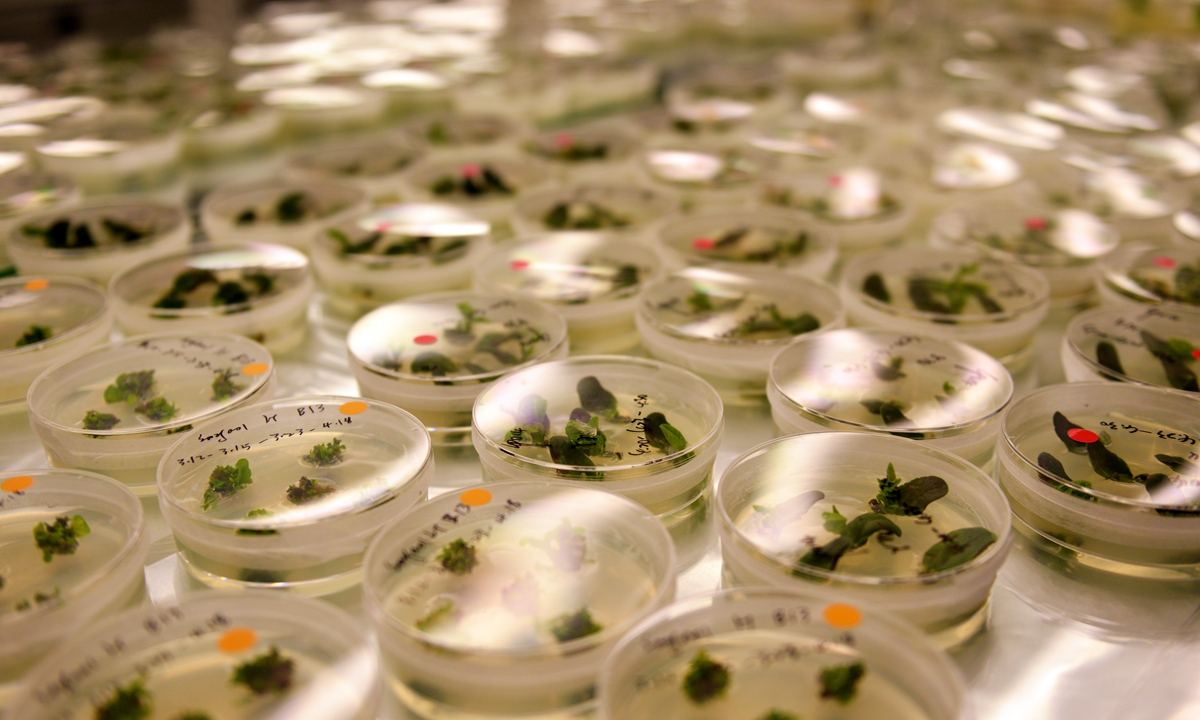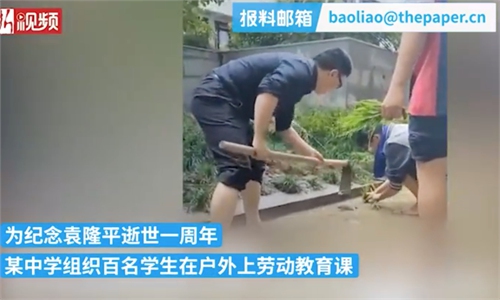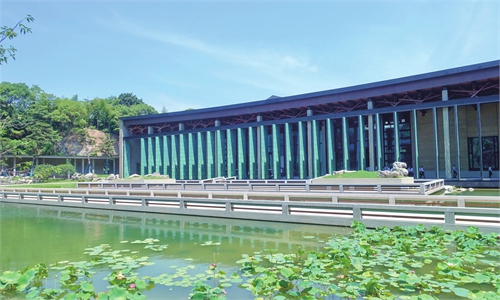
Soybean seeds undergoing genetic modification experiments in a lab at Longping Biotechnology (Hainan) Co in Sanya, South China's Hainan Province. File Photo: Zhao Juecheng/GT
Chinese agricultural scientists and industry leaders at a major forum on seeds in South China's Hainan Province on Thursday called for more efforts to boost research and development (R&D) in crop seeds to ensure food security.
The 2022 China Seed Congress and the Nanfan Agricultural Silicon Valley Forum kicked off in Sanya, Hainan, bringing together more than 2,000 scientists, field workers and company representatives to discuss the challenges facing China's seed industry and solutions amid global food price hikes.
The forum will be problem-oriented, focusing on the protection and utilization of crop germplasm resources, seed industry technology innovation, seed industry intellectual property protection and other topics. China's seed breeding breakthrough is one of the focal points of the forum.
The conflict between Russia and Ukraine, COVID-19 and extreme weather have made the domestic industry more aware of the crisis of seeds, Wang Feng, principal scientist at the Rice Research Institute of the Guangdong Academy of Agricultural Sciences, told the Global Times.
"Even if there are no developed countries strangling Chinese seeds, we can still feel that the external environment is forcing us to take the rice bowl in our own hands," said Wang.
Wang noted that the COVID-19 pandemic, Russia-Ukraine conflict and other factors have made global logistics intermittent. The lack of timely access to international markets and extreme weather conditions in Europe and the US are affecting local food production and have raised concerns about food security in various countries.
"China imports soybeans and corn every year. To eliminate food security risks, it is necessary to increase scientific and technological investment in China's seed industry," Wang said, adding that seed companies and scientific research institutions should do well in R&D to make the limited land more productive.
"In a word, 'good for farmers and good for consumers' is the direction of our seed selection," Zhang Qin, Vice Chairman and General Manager of Anhui Quanyin Seed Industry Technology Co Ltd, told the Global Times.
Zhang said that 90 percent of the seeds sold by Quanyin came from the company's own R&D, and it spent 5 percent of its annual sales revenue on R&D, about 80 to 100 million yuan ($11.9-14.8 million).
Data from the company show that in 2021, Quanyin sold more than 100 million kilograms of seeds for various crops, which can produce 60 billion kilograms of grain, sufficient to feed 100 million people.
A staffer from Yuan Long Ping High-Tech Agriculture Co Ltd (Longping High-tech), a leading domestic seed company, told the Global Times that although domestic seed companies have increased their R&D investment in recent years, China's national seed industry is still small in size, low in concentration and low in R&D investment.
In 2020, the sales revenue of Longping High-tech was 3.3 billion yuan ($420 million), accounting for 5 percent of the domestic seed market with R&D investment of 346 million yuan ($44 million). Meanwhile, the revenue of Bayer, Germen seed company, was 62.1 billion yuan ($7.9 billion), accounting for more than 20 percent of the global seed market. Bayer's R&D investment in agricultural business reached 18.08 billion yuan ($2.3 billion), said the staffer.
"China's seed industry is completely different from international seed giants in terms of business scale and R&D investment," the staffer noted.
As R&D is crucial to the seed industry, Chinese seed companies, in addition to the domestic market, have been actively expanding their R&D layout in overseas markets in recent years.
For instance, Longping High-tech has built more than 50 breeding stations for rice, corn, vegetables, millet and sunflower in China, Brazil, the US, Pakistan, the Philippines and other countries, with a total area of 13,000 mu (866.7 hectares) of test bases.
Jiang Sanqiao, deputy general manager of Quanyin, told the Global Times that the company's seeds are now exported to more than 20 countries and regions.
Since 2011, Quanyin has undertaken national agricultural technology cooperation projects in Angola, Sierra Leone, Tanzania and other countries, and cultivated and built more than 100,000 mu (6,666.7 hectares) of rice and corn farms overseas, according to Jiang.
"The pandemic has also raised awareness on food security in countries in Southeast Asia and Africa," Jiang said, citing Bangladesh as an example, which has solved its own food problem after China's high-yield hybrid rice was introduced in recent years.
The same is true in the Philippines. After COVID-19, the planting area of Chinese hybrid rice has gradually increased in the Philippines. "In recent years, our company's seed exports to the Philippines have been growing at an annual rate of 50 percent," said Jiang.



